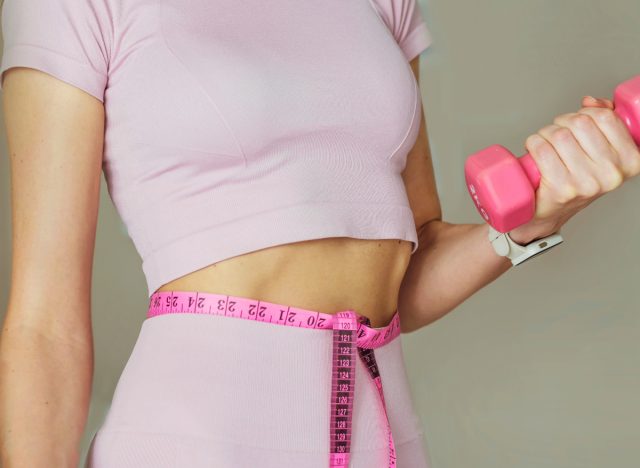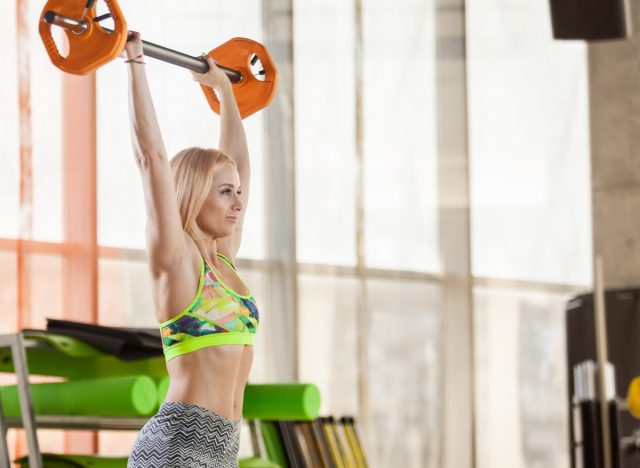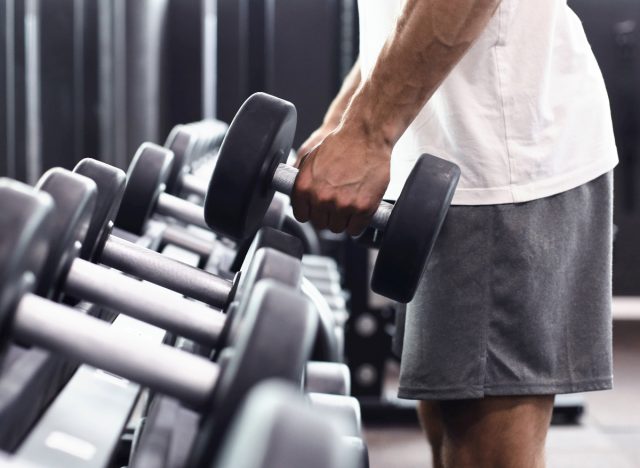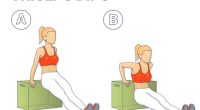Many people head to the gym with the goal of losing weight, specifically aiming to shed resistant fat around the abdomen. You’ve got your workout routine mapped out to optimize fat burning, but how do you decide on the best weight to use for your objectives? Let me, a coach with CSCS certification and over ten years of advanced experience, offer advice on selecting the right, suitably challenging weights for your exercise sessions. If your aim is to reduce belly fat, I’ll explain the appropriate weight level for your workouts.
It’s undeniable that strength training plays a vital role in achieving weight loss objectives and offers a plethora of health advantages. Adding strength training to your regimen increases muscle mass, improves muscle endurance, raises metabolic rate, and enhances the body’s ability to burn fat. Knowing how to select the right weights can greatly amplify your workout effectiveness, driving you towards your fitness goals.
Now, let’s delve into the essential aspects of choosing the correct weights to ensure you maximize your gym success. It’s important to train intelligently, prepare for each session, prioritize recovery when not at the gym, and maintain consistency. If you’re uncertain about where to begin, seek advice from a fitness expert, and always consult with a healthcare provider before starting any new fitness program.
How heavy should your weights be to lose belly fat?


Selecting the right weights for your workouts depends on a multitude of factors, including your fitness level, training experience, and the exercises in your workout program. If your goal is weight loss, choose a weight that will allow you to perform eight to 12 repetitions and occasionally up to 15 reps! Training with moderate to high repetitions can promote muscle growth and endurance, calorie burning, and achieve a higher metabolic rate, all contributing to weight loss.
To keep progressing, switch up your exercises every four to six weeks and embrace progressive overload. Increase either the weight, sets, or reps in each workout. This variety of exercises, paired with changes in workout volume, keeps your routine exciting and enables continuous improvement for your body.
Pro tip: Always prioritize good form over heavier weights to avoid injury. The last thing you want to do is push the weight too fast too soon, resulting in a setback. Starting with a lighter weight will improve form, enhance motivation, and keep you excited to hit the gym.
How is lifting weights beneficial for belly fat loss?


It’s easy to get stuck in the same routine of cardio, cardio, and more cardio when attempting to shed stubborn belly fat. Look to include weight training in your workout routine, coupled with cardio and a balanced diet, as a recipe to success for your weight-loss goals.
Lifting weights will help you increase lean muscle mass, improve your overall fitness level, and make your body more efficient at burning calories. Post-weight training, your metabolism stays high for hours, thanks to excess post-exercise oxygen consumption. This extended calorie burn aids in reducing belly fat, including around the abdomen.
While lifting weights may not specifically target belly fat, it contributes to an improved body composition by reducing overall body fat percentage and increasing lean muscle mass. You’ll take note of the positive effects as you lose fat throughout your body, including the abdomen.
How to choose the right weights for you:


Choosing the right weights involves careful consideration of your fitness level, exercise goals, and maintaining proper form while allowing room for progress.
I always recommend that beginners should start lighter to nail down form, strength, and confidence. Master the basic exercises before jumping into complex movements, and be consistent. Beginners will inherently see quicker progress when starting a fitness routine, so take advantage of this time to prepare yourself for the journey!
Next, understanding the specific goal of each exercise assists in determining the appropriate weights to use. Tailor weights based on goals: higher reps for endurance (15 to 20 reps), moderate for muscle building (eight to 12 reps), and lower reps for strength (three to five reps) For proper form, select weights that you can comfortably and confidently knock out each rep with, ensuring control throughout the exercise.
Remember, the gym is a learning process. Listen to your body—it’s your best guide. If a weight feels too heavy, prioritize perfect form, and drop the weight. If it’s too light, amp it up for that challenge. It’s all about experimenting to find that sweet spot where the weight pushes you without compromising your technique.
Tips when weight lifting for belly fat loss:


1. Warm up.
Always start your weight training sessions with a proper and effective warm-up to prepare your body for working out. Take a full-body approach focusing on movement, mobility, and muscle engagement. Preparation is key!
2. Prioritize compound exercises.
Center your workout routine around compound exercises, like squats, deadlifts, presses, rows, and lunges that work multiple muscle groups simultaneously, enhancing your calorie burn and ramping up your metabolism. If you’re unsure of where to start, consult a fitness professional!
3. Consider progressive overload.
Simply put, lift a little more weight or perform a few more reps and sets over time. This will challenge your muscles, stimulate lean muscle mass, and boost your fat-burning to reduce belly fat.
4. Target your core.
While you can’t spot reduce belly fat, you can perform exercises like crunches, planks, and sit-ups that’ll strengthen your core muscles and build that tone and tightened midsection. Pro tip: Engage your core muscles any time you are performing a lift.
5. Keep in mind that recovery is key.
Combine weight training with a balanced diet, hydration, and mobility for effective weight loss. This approach boosts performance, speeds up recovery, reduces injury risks, and ensures consistent workouts, all crucial for getting stronger and shedding stubborn belly fat.
Frequently Asked Questions (FAQs)
How Heavy Should My Weights Be To Lose Belly Fat?
To effectively lose belly fat, aim for weights that allow you to perform 10-15 reps with good form. This typically means using moderate weights where the last few reps are challenging but doable. It’s essential to focus on overall strength and muscle gain, as there’s no such thing as spot reduction. Consistency and gradually increasing the weight as you become stronger will also help in achieving your goals.
Is Strength Training or Cardio Better for Losing Belly Fat?
Both strength training and cardio are effective for losing belly fat, but they work in different ways. Strength training helps build muscle, which can increase your resting metabolic rate, leading to more calories burned throughout the day. Cardio, particularly high-intensity interval training (HIIT), can burn a lot of calories in a short amount of time and improve cardiovascular health. A combination of both is often considered the best approach for losing belly fat and improving overall fitness.
How Often Should I Lift Weights to Lose Belly Fat?
To lose belly fat, aim for at least 3 strength training sessions per week. These sessions should target all major muscle groups for balanced muscle development and fat loss. Allowing rest days between sessions is crucial for muscle recovery and growth. Incorporating some form of cardio on non-strength training days can help accelerate fat loss and enhance endurance.
How Many Calories Do I Need To Burn to Lose Belly Fat?
To lose a pound of fat, you need to burn approximately 3,500 calories more than you consume. Focusing on a sustainable calorie deficit through a combination of diet and exercise is the key to losing belly fat. However, it’s important to consume enough calories to support your exercise regime and overall health. Consulting with a health professional or nutritionist can help you determine the right calorie intake for your individual needs.
Can I Lose Belly Fat By Just Lifting Weights?
While lifting weights is an essential part of losing belly fat, incorporating other healthy habits is important for the best results. This includes maintaining a balanced diet, staying hydrated, getting enough sleep, and incorporating cardiovascular exercises. Remember, consistency and a holistic approach to fitness and nutrition are crucial for losing belly fat and achieving a healthier body.
What Types of Weights Exercises Are Best for Losing Belly Fat?
Compound exercises that work multiple muscle groups are particularly effective for losing belly fat. These include:
- Squats
- Deadlifts
- Bench presses
- Rows
- Overhead presses
These exercises help build muscle mass, increase metabolism, and burn calories. Incorporating exercises that target the core, such as planks and Russian twists, can also help strengthen the abdominal muscles as part of a balanced workout routine.
Are There Any Specific Diet Recommendations While Trying to Lose Belly Fat?
Eating a diet rich in whole foods like vegetables, fruits, lean proteins, whole grains, and healthy fats can support fat loss and muscle gain. Reducing the intake of processed foods, sugars, and unhealthy fats is also essential. Additionally, staying hydrated and managing portion sizes can help achieve a calorie deficit needed for fat loss without compromising nutritional needs.






